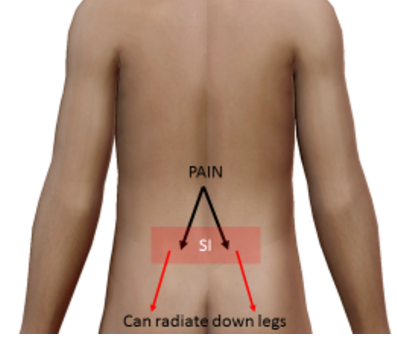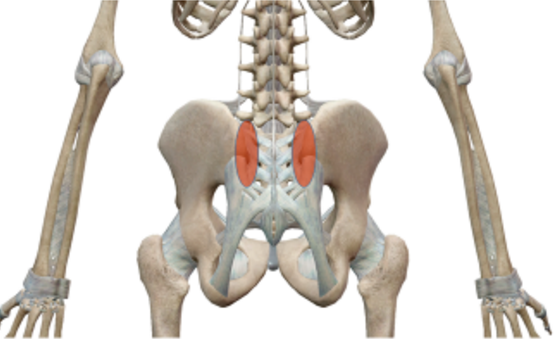Sacroiliac Joint Pain Relief
Hi, I’m Dr. Craig Chappell. I don’t know how it happened but I have become an expert in functional low back pain and today I would like to talk specifically about SI joint pain. A typical patient with this type of pain presents to my office complaining of low back pain that is right here (pointing to the SI joint).
The pain is generally worse with standing or walking for long periods of time. It’s usually stiff when they wake up or go from a standing to sitting position. And, it’s described as a dull, annoying, constant ache that sometimes radiates to the groin and sometimes all the way down the leg to the foot. And, frustratingly they have been misdiagnosed with “Sciatica” by a friend or some other healthcare provider. If this describes your current situation, keep reading, I’m about to get out the skeleton.
Whenever this complaint enters my office I get excited because I know I can help. So, I’ll ask you, just as if you were here, where would you point on this skeleton to illustrate your pain? I’ll give you a hint, you are looking at the back of the skeleton. Most people, about 90%, point to this area.
If you are flexible enough to look at your back-side in the mirror you will most likely be pointing in the direct vicinity of the sacral dimple (red area on the skeleton). Everyone has them regardless of size. The dimples are the 2 indentations of skin where your back meets your sacrum. Interestingly, this dimple corresponds to the red area on the skeleton.
This area is known as the SI joint. The S stands for sacrum and the I is for the Ileum. But we can’t stop there. If I were to touch the SI joint, I would have to pass through several structures in order to get there. These structures are skin, fat, latissimus dorsi, iliocostalis lumborum, longissimus thoracis, multifidus, thoracolumbar fascia, posterior sacroiliac ligaments and finally sacrum. All of which, when broken down can generate pain and none of which have anything to do with the dreaded Sciatica.
If this pain sounds familiar to you, before we go any further we need to perform a couple tests. Start by lying on your back on a firm surface. A bed will not work, you will have to lie on the floor. Now, raise one leg at a time about a foot to a foot and a half off the floor. So practice that a couple of times. Now do the same thing, one leg at a time and pay attention to whether or not one leg feels heavier or is more difficult to raise. Frequently the heavy leg will reproduce your pain to some extent.
Pain at the level of the SI joint with a heavy leg is generally the result of destabilization of the posterior sacroiliac ligaments. These ligaments are under the red ovals on the skeleton. So what does this pain mean and how did this happen? It means that your ligaments are not doing their job. For one reason or another they have lost some integrity and are now painful. This is sometimes associated with tender gluteal (butt) muscles. The exact reason for this is unknown but can be associated with pregnancy, overuse, prior back surgeries or fusions and athletics. The good news is, there is relief of this pain.
These complaints can be treated successfully with specific strengthening, osteopathic manipulation and regenerative injections. By the time people get to me they have generally completed a physical therapy program which has helped the strength but not the pain. This is not a failure as it will save us a step down the road, but you can’t strengthen a ligament without an intervention. You will need something to push these tired worn out ligaments from sickness to health. This is called regenerative medicine.
Fortunately for you, this is one of the most common complaints in my practice! So instead of continuing to attempt to ignore your pain, do something about it. Ignoring it got you where you are, it will take a plan to get you where you want to be.


